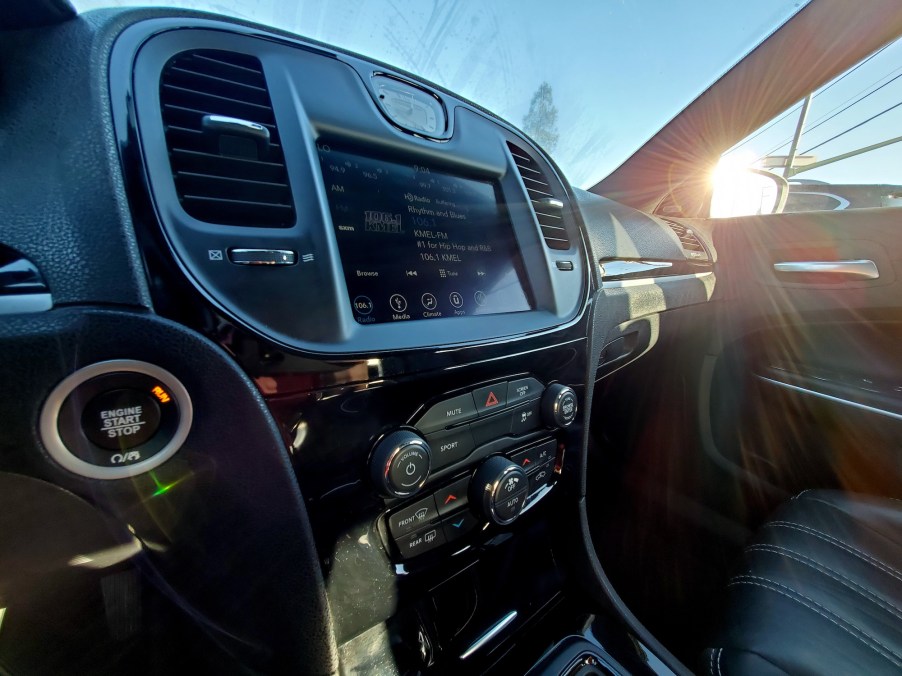
The Car Radio Has Been Around Way Longer Than You Think
One thing many drivers would argue is a necessity in a vehicle is a good infotainment system. There’s nothing better than listening to your favorite music or podcasts on road trips or the daily commute. But these elaborate, high-tech features are very different from what they once were.
It all began with the humble car radio. How long has it been around? And how has it evolved into the dynamic sound systems we use today?
Car radios have been around for decades
Car radios date back to 1930, Car and Driver explains. The first commercial in-car radio was available from the Galvin brothers in 1930 as a luxury item for $130. Keep in mind a Model A Deluxe coupe itself cost $540. But the first effort from Motorola was a big success.
AM radio dominated the airwaves until the early ’50s. But in 1952, the first in-car FM radio from Blaupunkt debuted. The next year, the iconic Mexico radio from Becker launched as the first premium vehicle radio.
Unlike those that came before it, Becker’s Mexico radio offered AM and FM. It also included a feature that would automatically search for radio stations with the touch of a button.
However, not every advancement in car radios was successful. Chrysler’s upscale vehicles in 1955 offered a small turntable called Music on Demand. It played seven-inch records that had 45 minutes of proprietary music. The effort didn’t hit the right note and failed.
By the ’60s, several manufacturers were hard at work producing all-transistor radios. The first successful solid-state transistor radio, which didn’t use vacuum tubes, was Becker’s Monte Carlo in 1963.
Eight-tracks, cassette tapes, and CDs
By the mid-’60s, the traditional car radio got an important upgrade. The first eight-track tape player debuted in 1965. It had a good run through the ’70s.
Eight-track tapes and their players weren’t exactly user-friendly or reliable. While eight-track tapes’ plastic casings were nearly indestructible, the same couldn’t be said for the tape itself.
Fortunately, while that was going on, the first stereo debuted in 1969. Becker again was leading the pack with its Europa. It was the first in-car stereo with a tuner that amplified two channels instead of one.
Cassette tapes’ arrival in the early ’70s was significant because they allowed users to create custom mixtapes for the first time. They also brought about a slew of aftermarket cassette-tape players from brands such as Alpine and Pioneer, according to Car and Driver.
In 1982, Bose developed the first premium stereo system. In a partnership with GM’s Delco, Bose offered a “designer” system developed for cars instead of a pricey head unit. The company pitched it hard to Buick, Cadillac, and Oldsmobile enthusiasts.
Soon, along came the first factory-installed in-dash CD players. In 1985, Becker’s Mexico Compact Disc appeared first, in Mercedes-Benz models.
Today’s infotainment systems
After almost a century of car radios, stereos, and other entertainment features, systems today are very different from those of yesterday.
With the widespread use of smartphones, most owners seek vehicles with complex infotainment systems that integrate with their phones and seemingly do everything but serve drinks. According to the National Motorists Association, automakers are developing vehicle systems that allow them to stay connected using the Internet of Things and artificial intelligence.
Today’s car infotainment systems combine software technology and hardware to deliver information and entertainment to drivers and passengers. Employing audio and video user interfaces along with keypads and touchscreens, they offer great versatility depending on the automaker and trim level.
Wouldn’t those car radio users in the ’30s marvel at today’s systems, allowing us to make hands-free phone calls, play music, listen to the news, and more?


